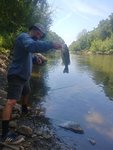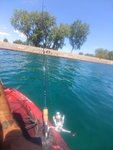River's Edge
Imperial Masterpiece
I love it how one says they don't disagree and then goes on to disagree!I don't disagree.
But I think there is way more to it than that.
Some crossover of a newb thinking work must be done at all times perhaps.
Poor ideas and worse application.
Poor scheduling, vision.
A fear of summer repotting.
A fear of "doing work out of season" in general.
..
I can see a collection of 50 spruce that are just about finished requiring a lot of work, wiring etc....
But once one understands the difference between a tree that can be left to its own devices and one that can not.....
When one realizes every bit of work doesn't have to take place in one season...
When one has the right mix of trees in grow out, training, refinement....
It's actually quite easy to properly maintain a decent collection.
Oh when you stop spraying for insects, wasting time on fertilizer cakes recipes and teabagging...stop sticking your fingers in every tree to gauge watering.....
Lotta seriously dumb shit we waste time on too.
Remember....
We can't speed this up,
So we must remove everything that makes it take longer.
This produces the fastest results.
Sorce
Incorrect inference re beginners, i have seen it more often in grey beards!
Skipping the bait!
Saving time for serious matters like proper soil components, only working healthy trees, watering properly, excellent organic fertilizer.
Saves time so i can enjoy the journey and also the results.




